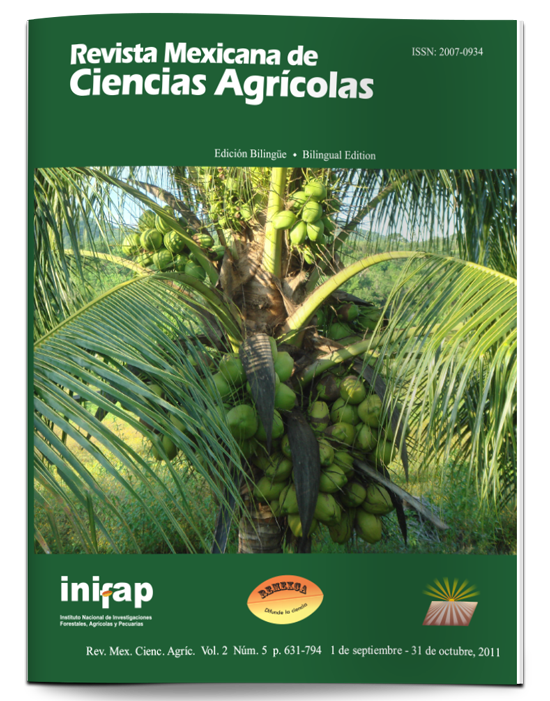INTERVARIETAL MAIZE CROSSES FOR THE SEMI-WARM REGION OF GUERRERO, MEXICO
DOI:
https://doi.org/10.29312/remexca.v2i5.1622Keywords:
Zea mays L., grain yield, ropical and subtropical varietiesAbstract
The topography and agro-ecology of the Guerrero State is diverse and in agricultural areas of intermediate elevation (1 200 to 1 700 m), almost no improved varieties are planted, due to unfavorable climatic and soil conditions, so it is difficult to establish a maize breeding program for every ecological niche. In these regions, the stability of 25 maize varieties was examined, during five summer-autumn crop seasons from 2005 to 2009; aiming to identify an intervarietal cross that was stable, consistent and with good yield potential through the environments. The data was analyzed in 20 varieties, using a randomized complete block design with three replications by location and combining locations. Using this information, the stability parameters proposed by Eberhart and Russell, and described by Molina were estimated, also the additive main effects and multiplicative interaction model (AMMI) was applied. The V15 and V16 male parents showed stability and consistency through the environments; a similar behavior was shown by V3, V7 and V9 intervarietal crosses, they were also outstanding in grain yield; V11 was consistent and showed greater production potential in unfavorable environments. Intervarietal crosses V1, V4, V6, V10, farmer’s local variety V13 and female parents V17, V18 and V20, showed good response in favorable environments but were also inconsistent. The two methods used, showed similar results; so, it was possible to select three varieties by its grain yield potential, stability, and consistency in environments.
Downloads
Downloads
Published
How to Cite
Issue
Section
License
The authors who publish in Revista Mexicana de Ciencias Agrícolas accept the following conditions:
In accordance with copyright laws, Revista Mexicana de Ciencias Agrícolas recognizes and respects the authors’ moral right and ownership of property rights which will be transferred to the journal for dissemination in open access. Invariably, all the authors have to sign a letter of transfer of property rights and of originality of the article to Instituto Nacional de Investigaciones Forestales, Agrícolas y Pecuarias (INIFAP) [National Institute of Forestry, Agricultural and Livestock Research]. The author(s) must pay a fee for the reception of articles before proceeding to editorial review.
All the texts published by Revista Mexicana de Ciencias Agrícolas —with no exception— are distributed under a Creative Commons License Attribution-NonCommercial 4.0 International (CC BY-NC 4.0), which allows third parties to use the publication as long as the work’s authorship and its first publication in this journal are mentioned.
The author(s) can enter into independent and additional contractual agreements for the nonexclusive distribution of the version of the article published in Revista Mexicana de Ciencias Agrícolas (for example include it into an institutional repository or publish it in a book) as long as it is clearly and explicitly indicated that the work was published for the first time in Revista Mexicana de Ciencias Agrícolas.
For all the above, the authors shall send the Letter-transfer of Property Rights for the first publication duly filled in and signed by the author(s). This form must be sent as a PDF file to: revista_atm@yahoo.com.mx; cienciasagricola@inifap.gob.mx; remexca2017@gmail.
This work is licensed under a Creative Commons Attribution-Noncommercial 4.0 International license.



